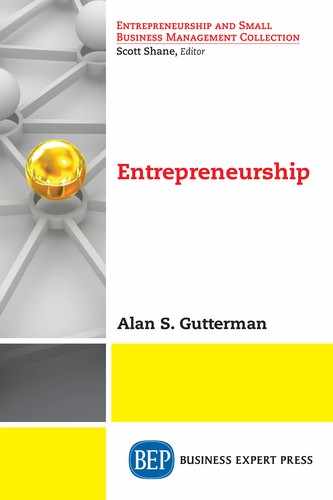Abbey, A., 154–155, 157
ability, 160
Acemoglu, D., 177–178
Acs, Z., 9–10, 13, 14, 30, 38–39, 41, 71–75, 93–94, 101–108
Aidis, R., 34
Aldrich, H., 25
American Heritage Dictionary, 36
anthropological entrepreneurship theories, 12
arrangements, 159
arrangers archetype, 160
Audretsch, D., 30
Baumol, W., 76
Bell, J., 49, 51, 56–60, 62–64
blockbuster entrepreneurs, 173–174
Brinkman, R., 73
Brockhaus, R., 4
Brown, R., 172–177
Brundtland Commission, 46, 59
Brundtland Report, 65
Burch, J. G., 9
“catalyst” enterprises, 78
The China Association for Management of Technology, 34
Chu, K., 178
cognitive dimension, 165
cognitive factors, 135–138
Cohen, B., 63
Cole, A., 4, 13
Colwell, A., 45
commercial and professional infrastructure, 92, 168
competitive strategies, 143–144
conservatives archetype, 160–161
context for entrepreneurial activity, 84–85
Coon, D., 11
corporate social responsibility initiatives, 44
Crals, E., 54, 59–60
cross-border entrepreneurship, 115–122
cultural and social norms, 93, 168
Daft, R., 52
dangerous archetype, 160
data collection, 91–92
Davidsson, P., 77–78
deal for entrepreneurial activity, 85
Dearlove, D., 171–172
decolonization, 123
Dees, J., 53
Delta Economics, 31–32
dimensions, 165
discontinued businesses, 91
Drucker, P., 69
dynamic entrepreneurs, 32
dynamic entrepreneurship, 78–79
Earley, P., 147
Eckhardt, J., 7
economic development, 71–80
economic entrepreneurship theories, 11
economic gains, 62–63
economic theory, 13–14
efficiency-driven stage, 72, 94
entrepreneurial, 36
The entrepreneurial activity subindex (ACT), 104, 108
The entrepreneurial aspiration subindex (ASP), 104–105, 108–109
The entrepreneurial attitude subindex (ATT), 104, 108
entrepreneurial education and training, 92, 168
entrepreneurial framework conditions (EFCs), 92–93, 100–101, 167–168
entrepreneurial intentions, 97
entrepreneurial motivations, 132–135
entrepreneurial opportunities, 138–141
entrepreneur in economic theory, 13–14
entrepreneurship
categories, 26–30
definitions, 1–10
in developing countries, 38–44, 122–125
research issues in, 109–115 (see also cross-border entrepreneurship)
theories, 10–12
types, 15–26
entry regulation, 92, 168
environmental and social concerns, 62
environmental conditions, 141–142
environmental entrepreneurship, 44–52
environment-specific factors, 121
Erez, M., 147
established businesses, 91
Eunni, R., 166
expected entrepreneurs, 16, 91
factor-driven stage, 72, 93–94
factor markets, 132
“failed” enterprises, 78
finance, 92, 167
firm-specific factors, 120
Freeman, J., 142
Friedman, M., 28
Garcia-Alba, J., 31
Gartner, W., 4–6
genuine entrepreneurship, 33
Gibbs, D., 45
Global Entrepreneurship and Development Index (GEDI), 9–10, 30, 42, 101–109
The Global Entrepreneurship Monitor (GEM), 9, 41–42, 89–101, 167
government policies, 92, 167
government programs, 92, 167
government regulation and control, 44
Graham, S., 1
green/environmental/ecopreneurship characteristics, 28
growth-oriented entrepreneurship, 30–33
Gupta, R., 35
Hannan, M., 142
Harper, D., 8
Henrekson, M., 173
“hero” or “success” enterprises,
77–78
Hessels, J., 5, 115, 119–122
high-growth firms (HGFs),
172–174
high-impact entrepreneurship, 33
Holcombe, R., 180–181
Horwitz, P., 4
individual- or entrepreneur-specific factors, 120
innovation, 33, 68–71
innovation clusters, 171–177
innovation-driven stage, 72–73, 94
institutional environment, 162–170, 177–182
intrapreneurship, 36–37
Isenberg, D., 175
Jobs, Steve, 140–141
Johanson, J., 117
Johansson, D., 173
Journal of International Entrepreneurship, 88–89
Kantis, H., 111–114, 129–132
Keister, L., 25
Kim, P., 25
Kirzner, I., 13, 14
knowledge-based entrepreneurship, 33, 34–36
knowledge, skills, and abilities (“KSAs”), 135–137
Koe, W. L., 8, 27, 28
Lam, T., 29
Laszlo, S., 104
latent entrepreneurs, 23
Leff, N., 71
Leibenstein, H., 73–74
Llisterri, J., 31
Locke, E., 135–136
Majid, I., 8, 27, 28
Mani, S., 34–35, 40
Marcic, D., 52
market
failures and disequilibria, 63
forces, 141
Marshall, A., 171–172
Mason, C., 172–177
McClelland, D., 133
McDougall, P., 8, 86, 87, 117–118
Milo, M., 169–170, 178, 181–182
motivations, entrepreneurial, 132–135
Mueller, S., 86, 110, 145–146, 149–152
Muñoz, P., 66
nascent activity, 91
nascent entrepreneurs, 16, 23–26
necessity entrepreneurship, 18, 20–21
networks, 131–132
new business owners, 16, 91
new institutional economics (NIE), 168–169
nonmotivational individual differences, 144–145
normative dimension, 165
Olson, M., 179–180
opportunity-based entrepreneurship, 12, 18–19, 33, 78–79, 85, 112
organizational competencies, 137
Oviatt, B., 8, 86, 87, 117–118
Patzelt, H., 66
“PCDO” model, 86
people for entrepreneurial activity, 84
personal aspects, 131
Pfeffer, J., 142
physical infrastructure and services, 92, 168
policymakers, 114–115
political factors, 141
Porter, M., 143–144, 171–172
potential entrepreneurs, 15, 90–91
potential entrepreneurship, 96–97
productive structure and dynamism, 131
professionals archetype, 160
psychological entrepreneurship theories, 11
Racelis, A., 67
R&D transfer, 92, 168
regular/economic/commercial characteristics, 27
regulations and policies, 132
regulatory dimension, 165
resource-based entrepreneurship theories, 12
resources, 141
Rey, L., 64–65
Reynolds, P., 12
Richtermeyer, G., 81
“robber” or “re-distributive” enterprises, 78
Roberts, P., 45
Sahlman, W., 83–84
Salancik, G., 142
Say’s conception, 13
Schaltegger, S., 48, 58
Schumpeter, J., 1, 3, 11, 13–14, 39, 71, 82, 171
Scott, W., 164
Shane, S., 6–8, 149, 151
Shapero, A., 157
Shepherd, D., 66
small- and medium-sized enterprises (SMEs), 38–39
Smith, A., 52
social and economic conditions,
131
social characteristics, 28
social entrepreneurship, 52–59
societal culture, 131, 145–155
sociological entrepreneurship theories, 11–12
Sokol, L., 157
Soltow, J., 13
stakeholder activism, 44
Stellingwerf, J., 49, 51, 56–60, 62–64
sustainable characteristics, 28
sustainable entrepreneurship, 59–68
Szerb, L., 9–10, 30, 41, 72–75, 93–94, 101–108
team-based entrepreneurship, 37–38
Thomas, A., 86, 110, 145–146, 149–152
Tilley, F., 29–30, 52–53
total early-stage entrepreneurial activity (TEA), 93–95, 98
trait approach, 5
transforming sectors toward sustainability, 63–64
universality and cultural specificity, 155–162
“Uppsala model,” 117
Vahlne, J. E., 117
van Eijck, P., 53
Venkataraman, S., 6–8, 44–45
Vereeck, L., 54, 59–60
Virgill, N., 13, 14, 38–39, 71, 72
Wagner, M., 22–26, 58
Walton, S., 140, 141
Welter, F., 21–22, 77–80
Wiklund, J., 77–78
willingness, 159
Winn, M., 63
York, J., 44–45
Young, W., 29–30, 52–53
